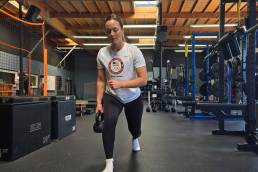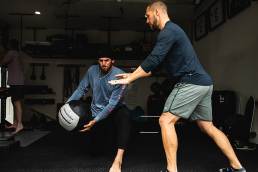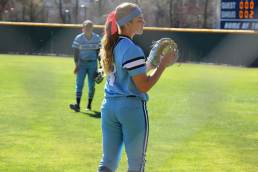Since training in season and keeping your body feeling healthy can be so difficult, I think it’s important to have a daily routine. Something that will not only aim to keep your body moving and feeling better, but also act as a daily self assessment. So lets dive right in to how you can go about creating a routine that will work for you.
Problem Areas
An overriding theme for the following protocols we’ll touch on is that you know your “problem areas” and should aim to address these daily. For example if you’re prone to lower back tightness and everything that may come along with that (tight hip flexors, over active QL and spinal erectors, under active glutes etc), then that should be a key focus with your breathing exercises working on some posterior tilt, myofascial release of the QL and hip flexors, and mobility drills.
It’s also a great opportunity for self-assessment of those areas. If I know I struggle with maintaining shoulder flexion, then I can assess how well I’m doing in that area daily by using some Glenohumeral CARs or Back to Wall Shoulder Flexion. On any given day that I experience tightness, discomfort, or just notice a difference, I can double down on releasing and stretching my lats. and pecs., and activating my lower traps. By doing things like this regularly, you’ll never get to a point where you’re thinking when on earth did I lose so much range of motion and get so tight.
Breathing
There seems to be many people out there who don’t believe in addressing breathing as a trainable quality, I’m not one however. Being around Water and Sports Physical Therpay for the last few years, particularly Randi who is well versed in PRI (Postural Restoration Institute) I have become a firm believer. Within the baseball community I think it is particularly important, as your shoulder can only be as good as the rib cage and pelvis that it is sat upon. I often use the analogy that if you put your brand new Mac on top of a wonky desk and it falls down and breaks, you wouldn’t go to Apple for a repair and do the same thing all over again. You would fix the desk!
Starting your daily routine with 1 or 2 breathing exercises is a great way to set a good foundation and be able to feel where your pelvis and ribs are in space. It’s also a good opportunity to clear your mind in order to properly assess your movements in comparison to previous days.
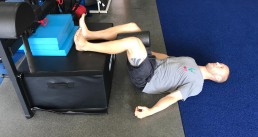
Unintended circle on display, but gotcha anyway Manny!
Myofascial Release
Much like breathing, there seems to be some controversy over the efficacy of foam rolling and myofascial release. In general I’m a big fan of doing what consistently makes your body feel good, and over the years my clients and I have mostly found great benefit from myofascial release techniques.
Using foam rollers, lacrosse balls, and other tools such as acumobility products you can pin, roll, and massage areas that tend to have a lot of tension. We tend to focus a lot on the psoas, pec. minor, lats., subscap, and posterior cuff among others.
Mobility vs Flexibility
It’s important to recognize that mobility and flexibility are not the same. Flexibility is a component of mobility, however our overall goal is to move with strength and control through a maximum range of motion, NOT to hold static stretches and improve passive ranges of motion. So our daily routine should include mobility exercises that aim to maintain if not improve control and strength as close to our end ranges of motion as possible.
In the somewhat rare case that you do need to decrease neural tension of certain muscles or groups of muscles, it’s important to keep in mind that you need to hold positions for several minutes or more to be effective. In my opinion it would be wise to immediately perform some isometric loading of the tissue within your new acquired range of motion if you want to avoid injury and have a chance of keeping the range. More on this subject at a later date however.
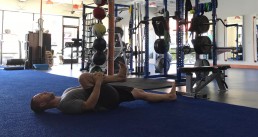
Flexibility; passively stretching hip and knee flexion using a little effort from the upper body.
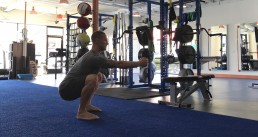
Mobility; actively pulling and pushing myself in and out of hip and knee flexion.
Combinations and Flows
Combining movements and holds not only allows you to get much more done in a shorter period of time, but also opens your mind up to how to move efficiently from one position to another. It’s another form of exploring movement and gets you thinking of the entire body as a system rather than simply isolated joints that are neighbors.
Since one of my problem areas of recent has been tight adductors I’ve been incorporating a lot of quadruped frog squats, particularly PAILs and RAILs. Since I’m already spending a prolonged period of time in the position before doing some isometric loading, I might as well get some other work done rather than just hanging out. In the video above you’ll see that I chose to do some Scapular CARs, Rock Back, and Hip Internal Rotation.
Another area of focus has been trying to open up the posterior capsule of my hip and get better ball in socket movement and control. Modified variations of the pigeon pose seem to hit the area well, however I need to spend considerable time there. So in this video I chose to incorporate some of shoulder work; Glenohumeral CARs, Swimmers, and End Range Circles.
Lastly here is a quick example of you can piece some exercises together in to a simple flow meaning you can get a ton of work done in only a couple of minutes. I’d suggest doing a couple more reps in each position, I just wanted to the video to be short for you guys. With practice you’ll realize that some things go together seamlessly, where as some you really have to be inventive to figure out how to transition. I think it makes mobility work far more interesting than just stopping and starting.
Symbiotic Training Center
Based in Miramar, California, Symbiotic Training Center is a one-stop shop for the modern baseball and softball athlete, combining individualized, sport-specific training programs, recovery amenities, physical therapy, and more. Powered by Joe Musgrove.
My Journey to Team USA: How I Made it
Professional softball player Ali Aguilar shares essential advice for young athletes aspiring to represent Team USA.
Things I wish I knew when I was in high school
Joe Musgrove: "If you’re dreaming of achieving success in your sport—or in any field—remember that the journey is as important as the destination."
Preparing for College Softball: Perspective on Travel Ball and What Needs to Change
There are a number of aspects of travel softball that, although well-meaning, may not be preparing young athletes for the demands and realities of college softball.

